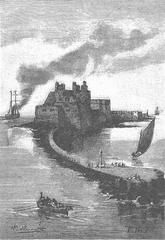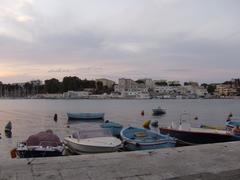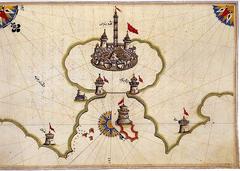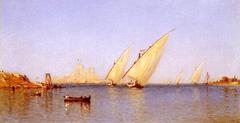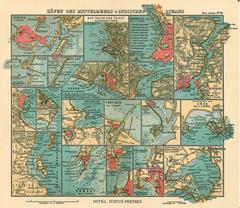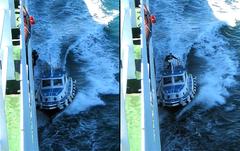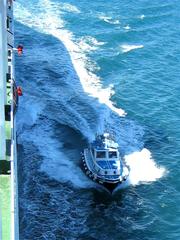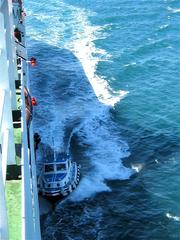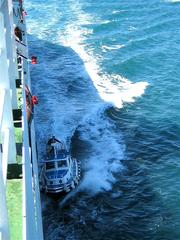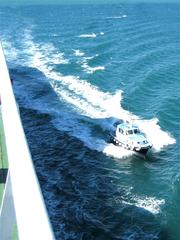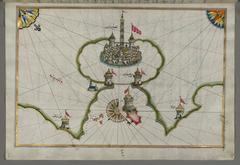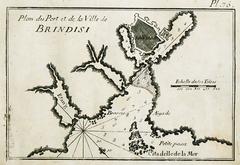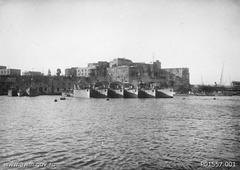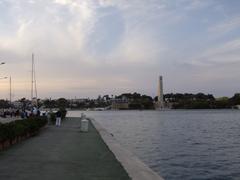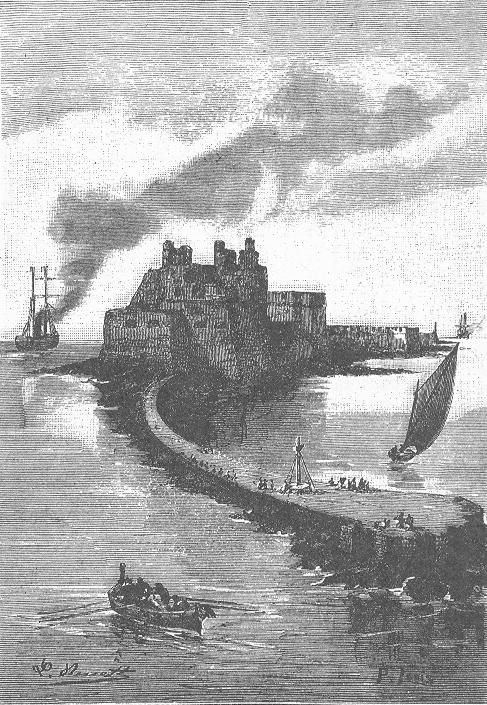
Port of Brindisi Visiting Hours, Tickets, and Travel Guide
Date: 15/06/2025
Introduction: Brindisi’s Gateway to the Adriatic
Nestled along the southeastern Adriatic coast in Italy’s Apulia region, the Port of Brindisi is a storied maritime gateway with a history spanning over two millennia. Once the Roman Empire’s bridge to the East via the iconic Via Appia, Brindisi’s harbor has long welcomed traders, crusaders, and travelers—its unique deer-head-shaped inlet sheltering a rich tapestry of cultural and commercial exchange. Today, the port is a vital connector between southern Italy and destinations such as Greece and Albania, seamlessly blending ancient heritage with modern vibrancy.
This guide provides comprehensive information on the Port of Brindisi, including visiting hours, ticketing, accessibility, guided tours, and practical travel tips. Whether you are embarking on a ferry journey, exploring Brindisi’s historic sites, or simply soaking in the maritime atmosphere, this resource will help you make the most of your visit. For the latest updates and schedules, consult official sources and travel apps like Audiala.
Explore the Port of Brindisi’s fascinating past and dynamic present—and prepare to discover one of Italy’s most picturesque and historically significant ports. (Italy We Love You, About2Cruise, The Crazy Tourist)
Table of Contents
- Ancient Origins and Roman Era
- Medieval and Renaissance Transformations
- Modern Era: Trade, Industry, and Connectivity
- Architectural and Archaeological Heritage
- Practical Visitor Information
- The Port in Contemporary Brindisi
- Cultural and Symbolic Significance
- Frequently Asked Questions (FAQs)
- Visuals and Media
- Related Articles
- Conclusion and Visitor Recommendations
- Official Sources
Ancient Origins and Roman Era
Brindisi’s natural harbor, shaped by two deep inlets, was recognized as a strategic maritime site as early as the 3rd century BCE. The city’s prominence soared when it became the southern terminus of the Via Appia, connecting Rome with the East. Roman emperors commissioned grand monuments, including two towering marble columns at the end of the Via Appia—one still standing today as a symbol of Brindisi’s role as the “Gateway to the East.” Archaeological finds, such as coins and statues, are displayed in the Museo Archeologico Provinciale Francesco Ribezzo, attesting to the port’s importance in ancient commerce and military logistics. (Italy We Love You, The Crazy Tourist)
Medieval and Renaissance Transformations
After the fall of Rome, Brindisi remained crucial as a gateway between Italy and the Eastern Mediterranean, especially during the Byzantine and Norman periods. The port became a departure point for Crusaders, further cementing its reputation as a cultural and commercial crossroads. Defensive structures, notably the 16th-century Castello Alfonsino (Aragonese Castle), were constructed to protect Brindisi from Ottoman and pirate threats—a testament to its enduring strategic value. (Italy We Love You, The Crazy Tourist)
Modern Era: Trade, Industry, and Connectivity
With Italy’s unification and the opening of the Suez Canal in the 19th century, Brindisi emerged as a key embarkation point for travelers and goods bound for India and the Far East. The 20th century saw further modernization and diversification: the port expanded to accommodate commercial shipping, passenger ferries, and naval operations. Today, Brindisi is a major transport hub for passenger and cargo traffic, with regular ferry routes to Greece, Albania, and other Adriatic destinations. (Italy We Love You)
Architectural and Archaeological Heritage
The port area is rich in architectural treasures, including:
- Roman Columns: The ancient marble columns marking the Via Appia’s end.
- Castello Alfonsino: A fortress guarding the harbor entrance.
- Lungomare Regina Margherita: A panoramic promenade lined with historical buildings and lively cafés.
- Museo Archeologico Provinciale Francesco Ribezzo: Home to artifacts from Brindisi’s ancient and medieval past.
These sites collectively reflect Brindisi’s layered history as a center of trade, defense, and cultural exchange. (The Crazy Tourist)
Practical Visitor Information
Visiting Hours and Tickets
- Port Area and Promenade: Open year-round; free to explore.
- Museo Archeologico Provinciale Francesco Ribezzo: Usually open 9:00 AM–7:00 PM; tickets ~€5 for adults, with reductions for students and seniors.
- Castello Alfonsino: Accessible via guided tours (advance booking required).
- Roman Columns and Lungomare: Open access.
Guided Tours and Events
Local operators offer guided tours of the port’s archaeological sites and fortifications. Annual maritime festivals feature boat parades, performances, and culinary events.
Accessibility and Travel Tips
- Wheelchair Access: Paved promenades and ramps at major attractions.
- Parking: Available near the port, though limited during peak season.
- Public Transport: Well connected to airport (Brindisi Salento Airport), train station, and city center.
- Ferry Connections: Regular services to Greece, Albania, and beyond. Advance booking recommended in summer (About2Cruise, OpenFerry).
Photographic Spots and Nearby Attractions
- Roman Columns and Castello Alfonsino for panoramic harbor views.
- Cathedral of Brindisi and historic city center within walking distance.
- Day Trips: Easy connections to Lecce, Ostuni, Alberobello, and the Torre Guaceto Nature Reserve.
The Port in Contemporary Brindisi
The Port of Brindisi supports diverse industries, including shipping, agriculture, and energy. The area features marinas, ferry terminals, and active docks, alongside landmarks like the Monument to Italian Sailors. Recent investments focus on sustainability, such as cold ironing (shore power) and clean energy projects (PortEurope).
Cultural and Symbolic Significance
Beyond its economic role, the port is deeply embedded in Brindisi’s identity, featured in art, literature, and annual festivals. It remains a living symbol of exchange and encounter, embodying the city’s maritime spirit (Italy We Love You).
Frequently Asked Questions (FAQs)
Q: What are the Port of Brindisi’s visiting hours?
A: The port area is open year-round; museums and castles typically open 9 AM–7 PM. Check specific sites for variations.
Q: Are tickets required?
A: The promenade is free; museums and guided tours have modest fees (around €5–€6).
Q: How do I get there?
A: Brindisi is accessible by air, train, car, and ferry. The port is centrally located with good transport links.
Q: Is the port accessible?
A: Yes, main areas are wheelchair accessible.
Q: Are guided tours available?
A: Yes, focusing on historical and archaeological sites.
Q: When is the best time to visit?
A: Spring and early autumn offer pleasant weather and fewer crowds.
Visuals and Media
- Aerial views of the port and harbor (About2Cruise)
- Maps of the port area and nearby attractions.
- Images: Roman Columns, Castello Alfonsino, Lungomare Regina Margherita, and the Swabian Castle.
- Virtual tours available on official tourism websites.
Related Articles
Conclusion and Visitor Recommendations
The Port of Brindisi is a remarkable destination where history and modernity meet. From ancient Roman landmarks to lively promenades and well-equipped ferry terminals, visitors will find a wealth of experiences. Take time to explore the port’s rich heritage, enjoy local cuisine, and venture into the scenic Puglian countryside.
Travel Tips:
- Book ferry and tour tickets in advance—especially in peak season.
- Use public transport or shuttles for easy access.
- Download the Audiala app for interactive maps and real-time updates.
- Consult official sources for updated schedules and event information.
- Explore nearby towns and nature reserves for a deeper taste of Apulia.
Start planning your journey—Brindisi awaits as Italy’s timeless “Gateway to the East.” (Italy We Love You, About2Cruise, The Crazy Tourist, nomadicsamuel.com)
Official Sources and Further Information
- Italy We Love You: Brindisi Travel Guide
- About2Cruise: Brindisi Cruise Port Guide
- The Crazy Tourist: Best Things to Do in Brindisi
- Nomadic Samuel: Brindisi City Guide
- Brindisi Tourism Website
- Visit Puglia
- OpenFerry: Brindisi Ferries
- PortEurope: Brindisi News
- ShipNext: Brindisi Port Details
- Ferryhopper: Brindisi Ferries
- Savoring Italy: Things to Do in Brindisi
